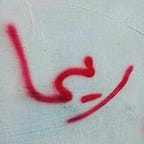Palestine Endures
Politically, the Palestine National Council declared the independence of the State of Palestine on Nov 15, 1988 and transmitted that declaration to the UN a few days later. To date 135 members of the UN recognize Palestine as an independent state. As such, Palestine has been accorded ‘Non-Member Observer State’ Status in the United Nations. Palestine is a member of UNESCO and is seeking to join more UN agencies.
The UN recognition allows Palestine to enter into international conventions and file complaints against Israel such as the 350-page complaint presented to the UN committee on discrimination on 23 April 2018 accusing Israel of racism and violation of its obligations under the International Convention on the Elimination of All Forms of Racial Discrimination, to which both Israel and Palestine are signatories. [Reported here.]
On the ground, however, Israel continues to maintain its military occupation of the West Bank and siege of the Gaza Strip. As an occupying power, Israel has obligations under Convention (IV) relative to the Protection of Civilian Persons in Time of War(Geneva, 12 August 1949). Its annexation of east Jerusalem, despite US support, is illegal according to international law. Denying Palestinians their right of return as expressed by UN General Assembly Resolution 194 (December 11, 1948) is also illegal.
To counteract the international framework described above which works against Israel’s settler-colonial goals of occupying historic Palestine “from the river to the sea”, Israel has launched several strategies, some of which involve the use of propaganda to deny the existence of Palestine as a geographic entity [replacing it, in people’s minds, with the mythical “Land of Israel”] and goes so far as to deny the existence of Palestinians themselves as a people, referring to them generically as “Arabs”.
The video clip from a TV show (The West Wing) below dramatizes the absurdity of such maneuvering on Israel’s part:
Charlie presents the President with a map of the Holy Land that he found at a flea market. The map does not depict Israel [but does depict Palestine] as it was drawn in 1709. The President wants to frame the map and hang it outside the Oval Office. Toby, C.J. and Leo convince him otherwise.
Palestine endures.
First and foremost, it endures in the hearts of generation after generation of dispossessed Palestinian non-Jewish Arabs, who are tenaciously holding on to their fundamental human rights for self-determination and equality in their own homeland, as well as restitution for theft of their lands and property, and continue to resist, with incredible bravery, the inhumanity of an imposed Apartheid, settler-colonial state seventy one years after their Nakba.
The Israeli state imposed on Palestine in 1948 is now in effective control of all the geographic area of historic Palestine (in accordance with the invading Zionists’ blueprint for Palestine, Plan Dalat) and continues to “settle” immigrant Jews and displace non-Jewish Palestinian Arabs in the territory that had been named Palestine on maps (since 43 AD).
Israel does that even in the West Bank, outside the Green Line, including in east Jerusalem — all against international law, as I explain above.
For decades Israel has tried to erase from public consciousness the Green Line, the pre-1967 boundary with the West Bank at the heart of stalled negotiations for a Palestinian state.
Israel has built on either side of the Green Line and deleted it from textbooks and weather maps. Israeli drivers plying the main Tel Aviv-Jerusalem highway crisscross the unmarked line at the Latrun Interchange every second of the day, slicing through half a mile of West Bank territory and several more miles of no man’s land, oblivious to the area’s fraught history.
To Palestinians, Israel exists only on the surface of Palestine, on top of Palestinian Arab rubble, clumsily disguised by planted trees paid for by the Jewish National Fund.
The symbol for the Palestinian struggle for liberation is a key. That symbol corresponds to a physical reality to this day in the form of an actual key kept by many Palestinian families, as they have kept documents (deeds) to their lands and property.
The on-going ‘Great March of Return’ attests to Palestinian determination and incredible courage in the face of adversity. Their will to return to their homeland and homes is indestructible.
__________________
Rima Najjar is a Palestinian whose father’s side of the family comes from the forcibly depopulated village of Lifta on the western outskirts of Jerusalem. She is an activist, researcher and retired professor of English literature, Al-Quds University, occupied West Bank
